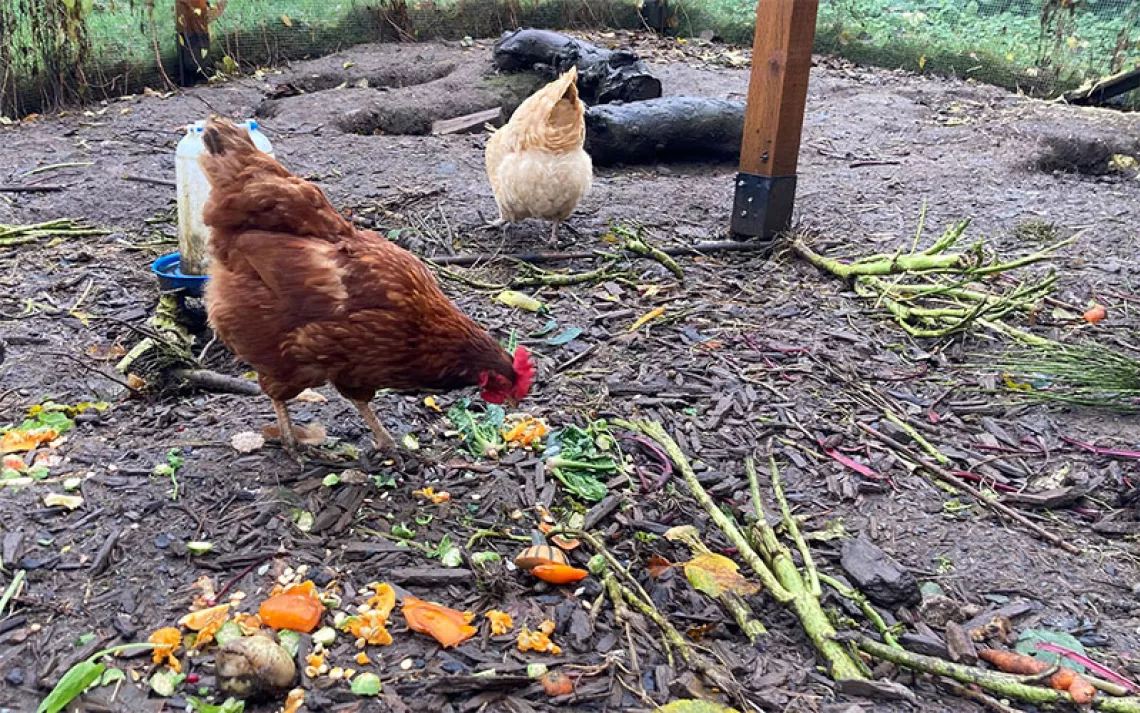Eliminating Food Waste One Recipe at a Time
In her new book, Eat It Up!, chef Sherri Brooks Vinton gives us creative ways to use up leftover food

Eat It Up | Photograph courtesy of Sherri Brooks Vinton
It was a fresh baby radish, of all things, that inspired Sherri Brooks Vinton. Then a cooking instructor, Vinton was dining at the Blue Hills restaurant in New York when she was served the whole vegetable and realized she could eat not just the root but the leaves as well. She bit into the greens, tasted their fresh pepperiness, and asked herself why she hadn’t been eating them all along.
Earlier this year, the veteran author, blogger, cook, and canning expert put out her fourth book, Eat It Up!, a collection of environmentally and budget friendly recipes that incorporate less popular parts of produce and animals.
“I think we’ve lost touch with what is edible,” Vinton says. “Oftentimes in the grocery store you’re presented with the center cut—a trimmed-down version of produce. If you don’t see them, you don’t know they’re edible.”
Carrot tops, celery leaves, and broccoli stems are all in the category of edible but regularly discarded produce. For example, many grocery stores remove the thick stems of broccoli and just sell the crowns. Vinton says she hadn’t even thought to use the stalks, until she saw a Julia Child recipe calling for them. Now she tosses the peeled, trimmed stems in slaws, soups, and stir-fries.
Eat It Up! is packed withtricks like that, drawing inspiration from a diverse range of cultures and influences to revive what Vinton calls the culinary tradition of using every part of produce and animals.
Reducing food waste helps consumers save money, but it also has a positive impact on the environment. In the United States, 133 billion pounds of food is wasted annually, with huge environmental costs: Rotting food is the third-largest producer of methane in the country, and the production of food that ends up being thrown away eats up valuable resources like clean water, land, and transportation.
“It takes a lot to grow food,” Vinton writes in Eat It Up!. “Every step in the process—from planting the seeds to weeding to harvesting and shipping—is quite resource intensive.”
Meat requires more resources than produce and is also the product people have the hardest time using up. Leftovers, especially of meat, often sit unused in the fridge, because people tend to prefer a fresh meal to yesterday’s cashew chicken.
In response, Vinton suggests “upcycling” already cooked food and giving it a facelift.
Eat It Up! features an entire section on leftover-inspired recipes: Yesterday’s ground beef can fill flaky empanada pastries, and spare bits of rotisserie chicken can turn into Asian-inspired lettuce cups. According to Vinton, “The more you enjoy, the less you’ll waste it.” Eliminating food waste at home might sound like a daunting task, but Vinton keeps her recipes fun and easy so consumers can start small at first.
“Don’t look at these ideas for reducing food waste as ‘Oh no, it’s another thing to do,’” Vinton says. “Think of it as something that has a bunch of benefits—no revamping needed of shopping or cooking styles. Incorporate it a little at a time.”
Here’s one of Vinton’s recipes for using up broccoli stalks:
Broccoli Slaw
If you are new to using broccoli stalks, this is a great “gateway” recipe. The tender stalks add just enough crunch, and their delicate flavor really lets the Asian dressing shine. If you have extra vegetables on hand—some radishes, daikon, cabbage, peppers—you can prep them in the same manner and throw them in as well. This slaw is happy to play.
Makes 2 to 4 side-dish servings
2 tablespoons soy sauce
1 tablespoon rice vinegar or white wine vinegar
Pinch of granulated sugar
1 teaspoon sesame oil
2 tablespoons neutral oil, such as organic canola
Red pepper flakes (optional)
Broccoli stalks from 1 bunch of broccoli, peeled trimmed, and shredded or cut into matchsticks
2 carrots, shredded or cut into matchsticks
2 tablespoons minced fresh cilantro (optional)
2 tablespoons sesame seeds
In a large bowl, whisk the soy sauce, vinegar, and sugar until the sugar is dissolved. Whisk in the oils and red pepper flakes, if using.
Add the broccoli and carrots and toss to combine. Garnish with the cilantro, if using, and the sesame seeds. Can be made up to two hours ahead.
 The Magazine of The Sierra Club
The Magazine of The Sierra Club



